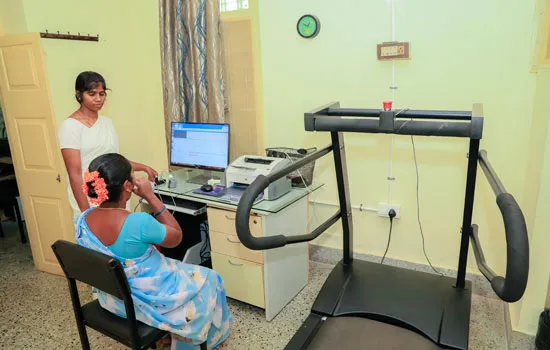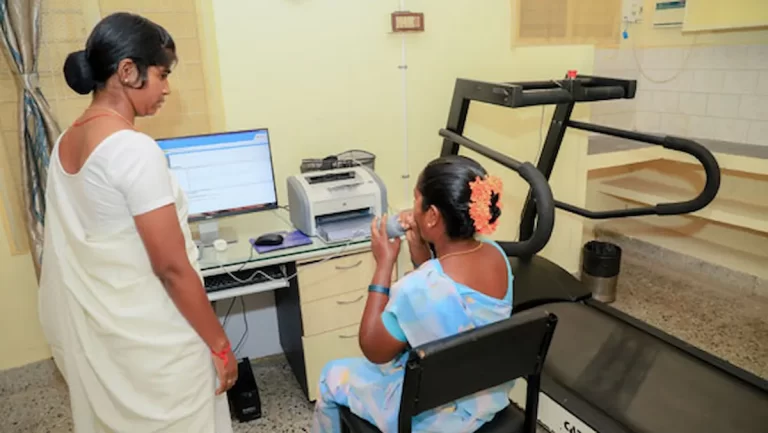Pulmonary function tests (PFTs) are non-invasive tests that show how well the lungs are working. The tests measure lung volume, capacity, rates of flow, and gas exchange. This information can help your healthcare provider diagnose and decide the treatment of certain lung disorders.
Spirometry. A spirometer is a device with a mouthpiece hooked up to a small electronic machine.
Why might I need pulmonary function tests?
There are many different reasons why pulmonary function tests (PFTs) may be done.
- Healthy person as part of a routine physical exam
- To screen for employee health (such as graphite factories and coal mines).
Or to diagnose
- Allergies
- Respiratory infections
- Trouble breathing from injury to the chest or a recent surgery
- Chronic lung conditions, such as asthma, bronchiectasis, emphysema, or chronic bronchitis
- Asbestosis, a lung disease caused by inhaling asbestos fibers
- Restrictive airway problems from scoliosis, tumors, or inflammation or scarring of the lungs
- Sarcoidosis, a disease that causes lumps of inflammatory cells around organs, such as the liver, lungs, and spleen
- Scleroderma, a disease that causes thickening and hardening of connective tissue
- Pre-operative assessment of lung
- Smoker
- To assess the effectiveness of treatment in case of asthma, emphysema, and other chronic lung problem

What happens during pulmonary function tests?
- Do not wear tight clothes or jewellery. Also, dentures need to be removed during the procedure
- You’ll need to empty your bladder before the procedure.
- You’ll sit in a chair. You’ll be given a sterile mouthpiece that is attached to a spirometer.
- You’ll form a tight seal over the mouthpiece with your mouth. You’ll be instructed to inhale and exhale in different ways.
- You will be watched carefully during the procedure for dizziness, trouble breathing, or other problems.
- You may be given a bronchodilator after certain tests. The tests will then be repeated several minutes later, after the bronchodilator has taken effect.

